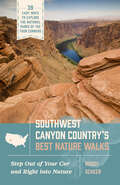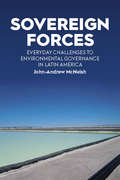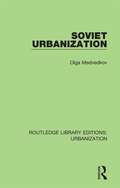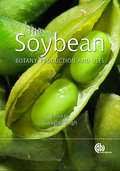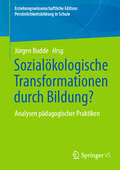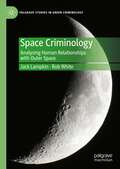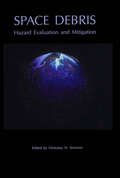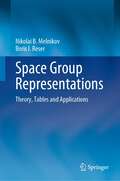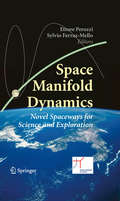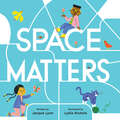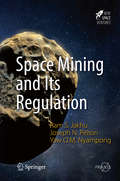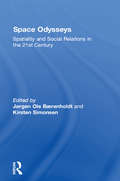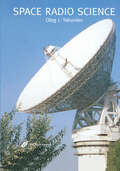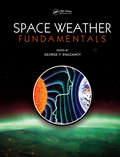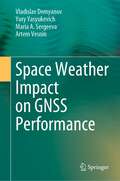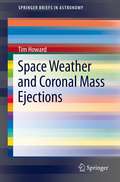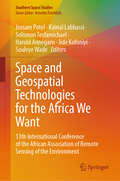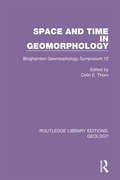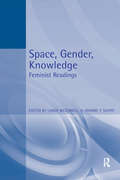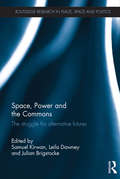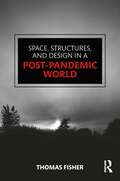- Table View
- List View
Southwest Canyon Country’s Best Nature Walks: 39 Easy Ways to Explore the National Parks of the Four Corners
by Roddy ScheerExplore some of the easiest and most rewarding hikes through Utah, Arizona, and Colorado's otherworldly landscapes—with descriptions of the unique flora, fauna, and geology any hiker can discover along the trail. From the towering cliffs of Zion to the ancient dwellings of Mesa Verde; from the bighorn sheep of Arches National Park to the Martian-looking landscapes of the Petrified Forest—each trail featured in Southwest Canyon Country's Best Nature Walks beckons with the promise of adventure and discovery. But these are not the epic treks of seasoned adventurers or the grueling expeditions of intrepid explorers. Instead, these are brief excursions—often chosen for being less crowded and for their proximity to the road—that can be enjoyed by families, solo travelers, and nature enthusiasts of all ages and abilities. Whether you're seeking a peaceful retreat into the wilderness or simply craving a breath of fresh air, this book has something for everyone.
Sovereign Forces: Everyday Challenges to Environmental Governance in Latin America
by John-Andrew McNeishSovereignty is a significant force regarding the ownership, use, protection and management of natural resources. By placing an emphasis on the complex intertwined relationship between natural resources and diverse claims to resource sovereignty, this book reveals the backstory of contemporary resource contestations in Latin America and their positioning within a more extensive history of extraction in the region. Exploring cases of resource contestation in Bolivia, Colombia and Guatemala, Sovereign Forces highlights the value of these relationships to the practice of environmental governance and peacebuilding in the region.
Soviet Urbanization (Routledge Library Editions: Urbanization #5)
by Olga MedvedkovOriginally published in 1990, Soviet Urbanization provides an assessment of Soviet urban systems. Drawing on her personal experiences at the Soviet Academy of Sciences and bringing with her much material otherwise unavailable in the West, the author analyses the structure of the Soviet urban network and its future development under the constraints of central planning. The author concludes that the danger to Soviet urbanization programme lies in the gap between central planning on the one hand and actual spatial change on the other. This book will appeal to students and academics working in the disciplines of geography, urban studies and planning.
Soy of Cooking
by Marie Oserdelicious, nutritious, low-fat, fat-free vegetarian recipes, some using soy, some not
Soybean
by Guriqbal Singh David Mcneil Nawab Ali Dilip Panthee Rita Raghuvanshi Glen Hartman Prabal Ghosh Digvir Jayas Edward Oyekanmi G. Chauhan Saratha Kumudini Vineet Kumer Anita Rani A. Rao Matthew O'Neal Dennis Egli S. Shanmusgasundaram Lijuan Qiu J. Mishra Jonas ChianuThe soybean is a crop of global importance and is one of most frequently cultivated crops worldwide. It is rich in oil and protein, used for human and animal consumption as well as for industrial purposes. Soybean plants also play an important role in crop diversification and benefit the growth of other crops, adding nitrogen to the soil during crop rotation. With contributions from eminent researchers from around the world, The Soybean provides a concise coverage of all aspects of this important crop, including genetics and physiology, varietal improvement, production and protection technology, utilization and nutritional value.
Sozialraum erforschen: Qualitative Methoden in der Geographie
by Jeannine WintzerDieses Buch stellt 21 Forschungsarbeiten zur Erforschung des Sozialraums vor und beschäftigt sich im Zuge dessen mit (1) dem Theorie-Methoden-Verhältnis, (2) der konkreten methodischen Umsetzung eines Forschungsprojektes und (3) den notwendigen Reflexionen im Hinblick auf das geographische Handeln. Denn geographisches Denken und Forschen ist durch Paradigmen- und Methodenpluralismus geprägt. Beides befruchtet die Geographie, stellt Studierende und Doktorierende jedoch auch vor große Herausforderungen, da für die Vielzahl von Forschungsfragen nicht eine allgemeingültige Theorie und generalisierende Methode zur Anwendung kommen kann. Fragen wie „Welche sozialräumlichen Praktiken können mit welcher Theorie und Methode analysiert werden?“, „Wie kann Forschungslogik und Gegenstandsangemessenheit gewährleistet werden?“ und „Welche Gütekriterien garantieren ‚gute Forschung‘?“ sind Fragen, die innerhalb von Forschungsprozessen immer wieder aufkommen. Die Beiträge geben forschungspraktische Antworten und motivieren für einen kreativen, transparenten und nachvollziehbaren Forschungsprozess.
Sozialökologische Transformationen durch Bildung?: Analysen pädagogischer Praktiken (Erziehungswissenschaftliche Edition: Persönlichkeitsbildung in Schule)
by Jürgen BuddeDer Band dokumentiert aktuelle empirische Befunde rekonstruktiver Forschungsprojekte zur Frage, welchen Beitrag Bildung zu sozialökologischen Transformationen leisten kann. Damit wird auf der Basis hervorragender studentischer Abschlussarbeiten empirisch beleuchtet, was zumeist lediglich normative Forderung ist, nämlich der Beitrag der Schule zu Nachhaltigkeit. Die Beiträge analysieren schulische Bedingungen für, sowie schulische Praxis von Nachhaltigkeitsbildung. Darüber hinaus wird Nachhaltigkeitsbildung jenseits von Schule thematisiert.
Space Criminology: Analysing Human Relationships with Outer Space (Palgrave Studies in Green Criminology)
by Rob White Jack LampkinAs humans expand the frequency and scale of interactions off-planet, Space Criminology ponders the nature of crime, harm and transgression in outer space and possible responses to these. The first book of its kind, it discusses the dynamics of space crime, from those involving powerful elites through to those associated with the mundane interactions of people living and working in space. It is essential reading for anyone interested in extra-terrestrial crime, space law, and criminal justice.
Space Debris: Hazard Evaluation and Debris
by Nickolay N. SmirnovWhen the first sputnik was launched and the space era began, few gave thought to the possible negative impact of putting satellites into orbit. In fact, man's space activity has led to the formation of a new media named "space debris," i.e. man-made objects and their fragments launched into space, currently inactive and no longer serving any useful
Space Group Representations: Theory, Tables and Applications
by Nikolai B. Melnikov Boris I. ReserThis book is devoted to the construction of space group representations, their tabulation, and illustration of their use. Representation theory of space groups has a wide range of applications in modern physics and chemistry, including studies of electron and phonon spectra, structural and magnetic phase transitions, spectroscopy, neutron scattering, and superconductivity. The book presents a clear and practical method of deducing the matrices of all irreducible representations, including double-valued, and tabulates the matrices of irreducible projective representations for all 32 crystallographic point groups. One obtains the irreducible representations of all 230 space groups by multiplying the matrices presented in these compact and convenient to use tables by easily computed factors. A number of applications to the electronic band structure calculations are illustrated through real-life examples of different crystal structures. The book's content is accessible to both graduate and advanced undergraduate students with elementary knowledge of group theory and is useful to a wide range of experimentalists and theorists in materials and solid-state physics.
Space Manifold Dynamics
by Sylvio Ferraz-Mello Ettore PerozziThe term "Space Manifold Dynamics" (SMD) was proposed during the workshop "Novel Spaceways for Scientific and Exploration Missions" for describing new types of spacecraft trajectories that could revolutionize how space missions are designed. Obtained by applying the dynamical system approach to mission design, these trajectories represent a fascinating alternative to elliptic motion and provide a deeper understanding of the classical three and N-body problems in celestial mechanics. This book gives a state-of-the-art overview of this new field of study together with applications of an interdisciplinary nature involving planetary science, astrophysics and the manned exploration of the solar system.
Space Matters
by Jacque LynnGently encourage mindfulness and critical thinking through this playful and witty exploration of negative space. Can empty space be useful? Can it lead to new perspectives and new appreciation? Might it even be inspiring? Find out in a winsome book that draws on a child&’s everyday experiences to prompt readers to look twice at their surroundings and notice the significance of sights, sounds, and spaces otherwise taken for granted.
Space Mining and Its Regulation
by Joseph N. Pelton Ram S. Jakhu Yaw Otu Mankata NyampongThis book reviews the current and possible future regulatory oversight of the state and non-state actors now engaged in or planning to become engaged in the exploration and possible exploitation of space related natural resources, whether they be liquid, gaseous, or mineral. An increasing number of countries are also becoming involved in space-related activities that were previously carried out primarily by the US and the USSR (now the Russian Federation). The European Union and its individual member states, Japan, China and India in particular are assuming increasingly important roles in space as in many other areas. Even the United Arab Emirates has announced plans to send a future robotic mission to Mars. As such, exploration, exploitation and utilization of space natural resources are no longer matters to be considered within the exclusive domain of competition and decision-making between the US and the Russian Federation. It is significant to note that, in addition to this new international context, the exploitation of space natural resources is also no longer confined to the traditional domains of science and technology. Regulatory issues abound. These endeavors and how they might be regulated by international treaties, standards, codes of conduct or other means have become a truly international political issue. As a consequence, topics dealing with common concerns - sharing of resources, environment protection, and pollution - easily raise difficulties, as they require different states to agree on common principles having a direct impact on their sovereignty and financial interests. There is yet another new paradigm in the conduct of space activities. While in the past, space activities traditionally fell under the exclusive domain of governmental entities, the last few years have seen the emergence of the private sector of "space entrepreneurs". This poses several challenges for the pre-existing governance regime whose foundations are steeped in the classical State-based conception of international law. As a result, the text examines adequacies and ambiguities in treaty provisions and national laws, currently accepted practices involving the exploration and exploitation of space natural resources that will grow in importance in the coming decades.
Space Odysseys: Spatiality and Social Relations in the 21st Century
by Kirsten Simonsen Jørgen Ole BærenholdtThe nature of spatial imaginations has become central to a range of major social and political debates. Narratives on spatial inequality, from the North-South divide in global economic and political visions, to marginalisation and 'ghettoisation' in Western cities, appear regularly in our daily newspapers. Such examples indicate that issues of space/spatiality are as crucial in our current societies as never before. 'Space Odysseys' brings together leading social scientists including John Urry and Derek Gregory to address a number of central issues in spatiality and social relations in the early 21st century. Starting from the presupposition that space is a social dimension and a social construct, it then presents examples of these conceptions of space at work. While the book title's indirect reference to the film '2001: A Space Odyssey' indicates the contributors' interest in questions of voyages and mobility, the plural use shows that the approaches to this conceptual exploration are multiple, reflecting differences in experience, in social context and/or in gender, class and ethnicity. The book is divided into three main sections. The first explores issues of 'mobility, immobility and embodied narratives', the second section deals with 'territoriality, mobility and identity politics and the final section concludes with chapters on 'the spatial production of knowledge'.
Space Radio Science (Earth Space Institute Book Series)
by O.I. YakovlevSpace Radio Science outlines space communications with Earth's satellites and interplanetary probes, interstellar radio communications within our galaxy, and the effects of gravitational fields on propagating radio waves. The text describes a method of radio occultation used to monitor planetary atmospheres and ionospheres. The author considers the remote sensing of circumsolar and interplanetary plasmas as well as of the Earth and other planets in the solar system. He also analyzes radiophysical problems and methods, as well as the benefits of spacecraft and radio signals. This book is ideal for radio-physicists, engineers, and students in space radiophysics, remote sensing, and space communications.
Space Weather Fundamentals
by George V. KhazanovSpace weather is one of the most significant natural hazards to human life and health. Conditions of the sun and in the solar wind, magnetosphere, ionosphere, and thermosphere can influence the performance and reliability of space-borne and ground-based technological systems. If conditions in the space environment are adverse, they can cause disruption of satellite operations, communications, navigation, and electric power distribution grids, leading to a variety of socioeconomic losses. This book provides an overview of our current knowledge and theoretical understanding of space weather formation and covers all major topics of this phenomena, from the sun to the Earth’s ionosphere and thermosphere, thus providing a fully updated review of this rapidly advancing field. The book brings together an outstanding team of internationally recognised contributors to cover topics such as solar wind, the earth's magnetic field, radiation belts, the aurora, spacecraft charging, orbital drag and GPS.
Space Weather Impact on GNSS Performance
by Vladislav Demyanov Yury Yasyukevich Maria A. Sergeeva Artem VesninThis book addresses problems of GNSS performance support under geomagnetic storms and solar radio bursts. It analyses both physical and radio-engineering sources of GNSS performance deterioration caused by geomagnetic storms, solar radio bursts and peculiarities of the polar and equatorial ionosphere. The book takes into consideration both standalone GNSS and differential GNSS. Based on experimental data analysis, it presents a systematic approach to maintaining reliable GNSS performance despite the Space Weather impacts.Given its scope, the book offers a valuable resource for GNSS users and equipment developers, as well as researchers and students whose work involves GNSS remote sensing, surveying, navigation, and related disciplines.
Space Weather and Coronal Mass Ejections
by Tim HowardSpace weather has attracted a lot of attention in recent times. Severe space weather can disrupt spacecraft, and on Earth can be the cause of power outages and power station failure. It also presents a radiation hazard for airline passengers and astronauts. These "magnetic storms" are most commonly caused by coronal mass ejections, or CMES, which are large eruptions of plasma and magnetic field from the Sun that can reach speeds of several thousand km/s. In this SpringerBrief, Space Weather and Coronal Mass Ejections, author Timothy Howard briefly introduces the coronal mass ejection, its scientific importance, and its relevance to space weather at Earth and other planets. This title focuses on the latest advances in CME observation and modeling, including new results from the NASA STEREO and SDO missions. It also includes topical issues regarding space weather and the most recent observations and anecdotal examples of the impacts of space weather and CMEs.
Space and Astrophysical Plasma Simulation: Methods, Algorithms, and Applications
by Jörg BüchnerThis book is a collection of contributions covering the major subjects in numerical simulation of space and astrophysical plasma. It introduces the different approaches and methods to model plasma, the necessary computational codes, and applications in the field. The book is rooted in the previous work Space Plasma Simulation (Springer, 2003) and includes the latest developments. It is divided into three parts and all chapters start with an introduction motivating the topic and its use in research and ends with a discussion of its applications. The chapters of the first part contain tutorials of the different basic approaches needed to perform space plasma simulations. This part is particularly useful for graduate students to master the subject. The second part presents more advanced materials for students and researchers who already work with pre-existing codes but want to implement the recent progresses made in the field. The last part of the book discusses developments in the area for researchers who are actively working on advanced simulation approaches like higher order schemes and artificial intelligence, agent-based technologies for multiscale and multi-dimensional systems, which represent the recent innovative contributions made in space plasma research.
Space and Geospatial Technologies for the Africa We Want: 13th International Conference of the African Association of Remote Sensing of the Environment (Southern Space Studies)
by Souleye Wade Jossam Potel Kamal Labbassi Solomon Tesfamichael Harold Annegarn Jide KufoniyiThis book comprises the contributions of the African Association of Remote Sensing of the Environment (AARSE) international conference which is conducted biennially across Africa, alternately with the AfricaGIS conference. It is the premier forum in Africa for research on remote sensing technologies and geospatial information science, gathering leading scholars from the remote sensing and related communities. The 13th AARSE International Conference was held on October 24-28, 2022 in Kigali, Rwanda, to focus on Earth observations and geospatial science to achieve the Sustainable Development Goals. The five-day event themed “Space and Geospatial Technologies for the Africa We Want” was organized by the African Association of Remote Sensing of the Environment (AARSE) and the Institut d’Enseignement Supérieur de Ruhengeri (Ines-Ruhengeri) in partnership with Rwanda Space Agency and Space in Africa. Furthermore, the conference was sponsored by GMES and Africa, the Regional Centre For Mapping Of Resources For Development (RCMRD), Airbus, European Space Agency (ESA), Digital Earth Africa, and INES-Ruhengeri and Rwanda Space Agency. The 13th Conference continues a long series of successful AARSE conferences which started in 1996, in Harare (Zimbabwe), and has been held in Abidjan (Cote D'Ivoire) in 1998, Cape Town (South Africa) in 2000, Abuja (Nigeria) in 2002, Nairobi (Kenya) in 2004, Cairo (Egypt) in 2006, Accra (Ghana) in 2008, Addis Abeba (Ethiopia) in 2010, El Jadida (Morocco) in 2012, Johannesburg (South Africa) in 2014, Kampala (Ouganda) in 2016, and in Alexandria (Egypt) in 2018. The book is mainly addressed to practitioners and experts from academia, politics, and industry.
Space and Time in Geomorphology: Binghamton Geomorphology Symposium 12 (Routledge Library Editions: Geology #27)
by Colin E. ThornThis book, first published in 1982, is a collection of articles aimed at advancing the field of geomorphology. It starts from the position that a meaningful grasp of landscape evolution would depend upon an understanding of the present spatial distribution of processes and process rates; comparison of spatial versus temporal change; and careful appraisal of the character and composition of the stratigraphic record. Each article uses a data set to address between threshold variability in either a spatial or temporal context, and often both.
Space, Gender, Knowledge: Feminist Readings (Arnold Readers In Geography Ser.)
by Joanne P. Sharp Linda McDowell'Space Gender Knowledge' is an innovative and comprehensive introduction to the geographies of gender and the gendered nature of spatial relations. It examines the major issues raised by women's movements and academic feminism, and outlines the main shifts in feminist geographical work, from the geography of women to the impact of post-structuralism. In making their selection, the editors have drawn on a wide range of interdisciplinary material, ranging across spatial scales from the body to the globe. The book presents influential arguments for the importance of the intersection between space and gender. Looking both at geography and beyond the discipline, it explores the gendered construction of space and the spatial construction of gender. Divided into a number of conceptual sections, each prefaced by an editorial introduction, this reader includes extracts from both landmark texts and less well-known works, making it an indispensable introduction to this dynamic field of study.
Space, Imagination and the Cosmos from Antiquity to the Early Modern Period (Studies in History and Philosophy of Science #48)
by Frederik A. Bakker Delphine Bellis Carla Rita PalmerinoThis book is devoted to the analysis and applications of energy, exergy, and environmental issues in all sectors of the economy, including industrial processes, transportation, buildings, and services. Energy sources and technologies considered are hydrocarbons, wind and solar energy, fuel cells, as well as thermal and electrical storage. This book provides theoretical insights, along with state-of-the-art case studies and examples and will appeal to the academic community, but also to energy and environmental professionals and decision makers.
Space, Power and the Commons: The struggle for alternative futures (Routledge Research in Place, Space and Politics)
by Samuel Kirwan Leila Dawney Julian BrigstockeAcross the globe, political movements opposing privatisation, enclosures, and other spatial controls are coalescing towards the idea of the ‘commons’. As a result, struggles over the commons and common life are now coming to the forefront of both political activism and scholarly enquiry. This book advances academic debates concerning the spatialities of the commons and draws out the diverse materialities, temporalities, and experiences of practices of commoning. Part one, "Materialising the Commons" focuses on the performance of new geographical imaginations in spatial and material practices of commoning. Part two, "Spaces of Commoning", explores the importance of the turn from ‘commons’ to ‘commoning’, bringing together chapters focusing on the "doing" of commons, and how spaces, materials, bodies and abstract flows are intertwined in these complex and excessive processes. Part three, "An Expanded Commons", explores the broader registers and spaces in which the concept of the commons is at stake and highlights how and where the commons can open new areas of action and research. Part four, "The Capture of the Commons", questions the particular interdependence of ‘the commons’ and ‘enclosure’ assumed within commons literature framed by the concept of neoliberalism. Providing a comprehensive introduction to the diverse ways in which ideas of the commons are being conceptualised and enacted both throughout the social sciences and in practical action, this book foregrounds the commons as an arena for political thought and sets an agenda for future research.
Space, Structures and Design in a Post-Pandemic World
by Thomas FisherPandemics have long-term effects on how we live and work, and the COVID-19 pandemic was no exception, accelerating us into a digital economy, in which people increasingly work, shop, and learn online, transforming how we use space in-person and remotely. Space, Structures, and Design in a Post-Pandemic World explores the rebalancing of our physical and digital interactions and what it means for the built environment going forward. This book examines the effect of the pandemic on our use of land, interior space, energy, and transportation, as well as on our approach to design, wealth, work, and practice. Author Thomas Fisher also discusses the plagues of institutional racism and climate change that coincided with the COVID-19 pandemic and how these were interrelated. At the same time as all of this, the automation of all or part of many jobs continued unabated, eliminating much of the work that people did before COVID-19 arrived. This text discusses how we might leverage the under-utilized human talent and material assets all around us to rebuild our communities and our economy in more creative ways for a more equitable, resilient future. Space, Structures, and Design in a Post-Pandemic World will influence anyone interested in how design thinking can transform how we see the world and those looking for new ways to understand what the COVID-19 pandemic means and what opportunities it creates for our environments.
